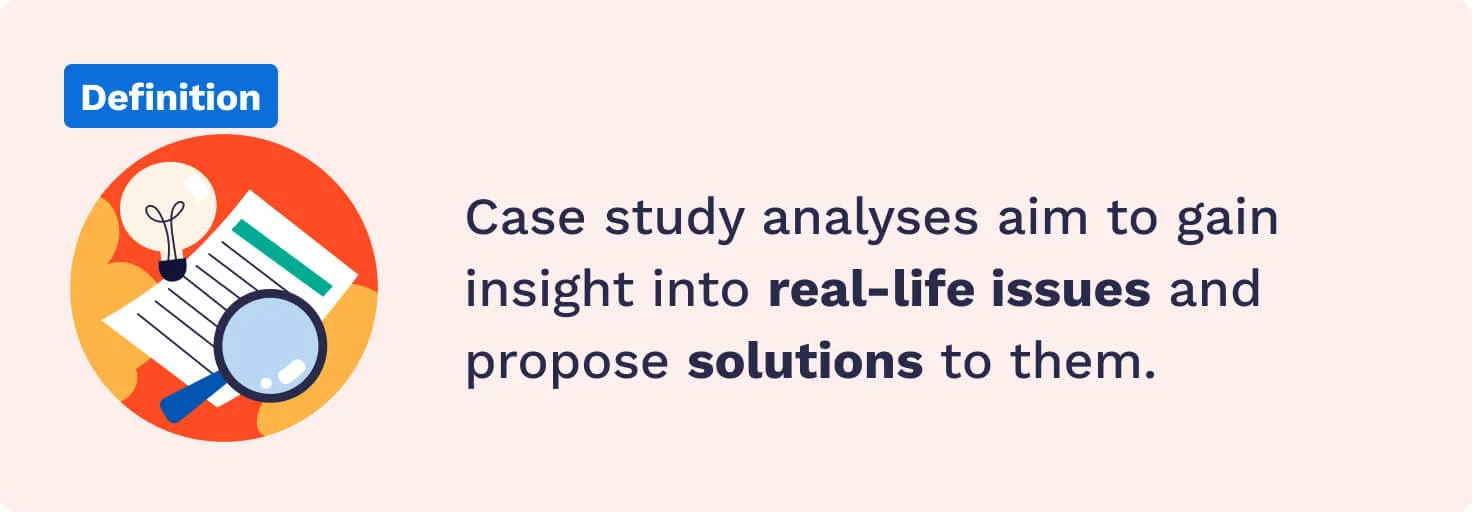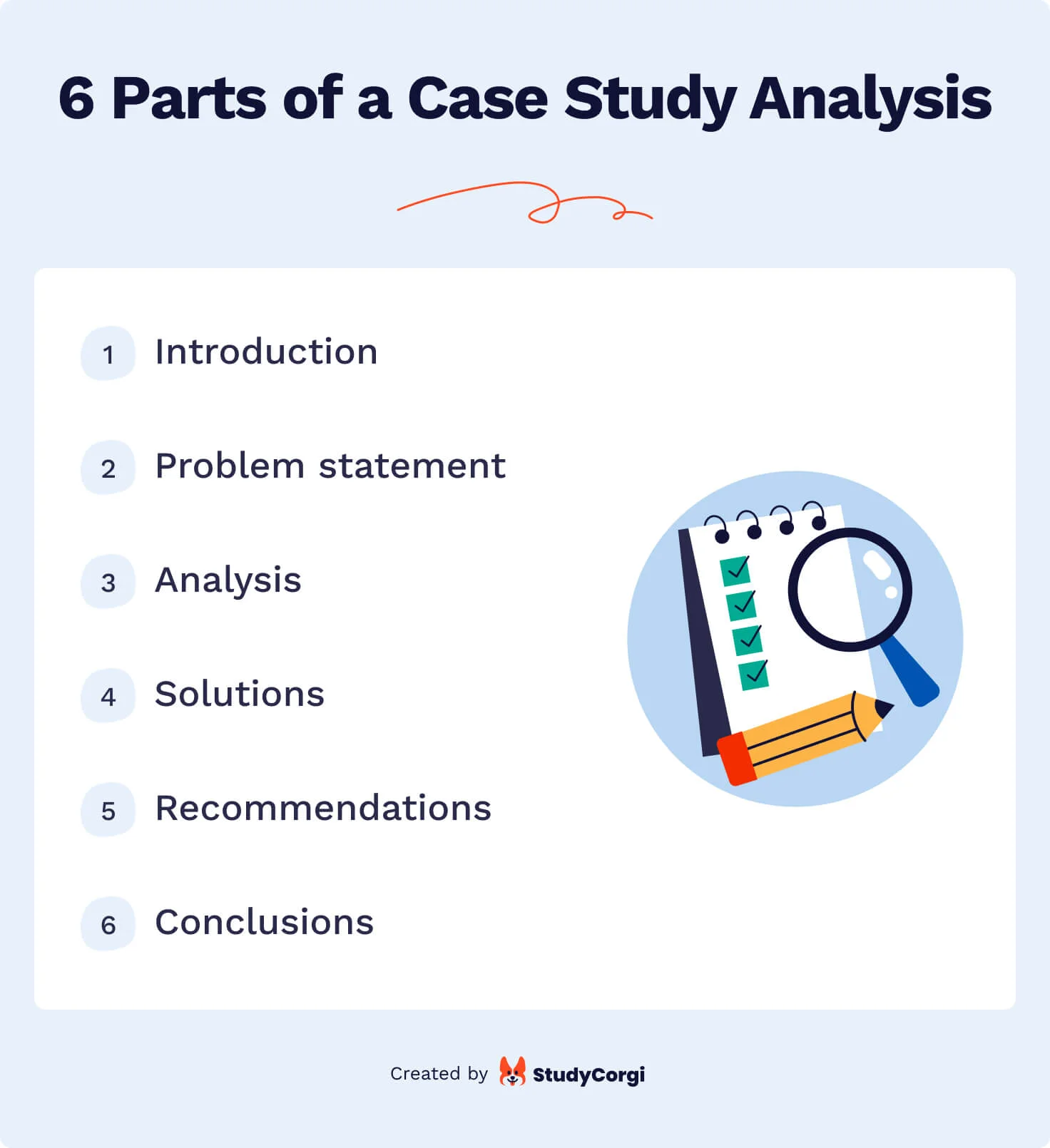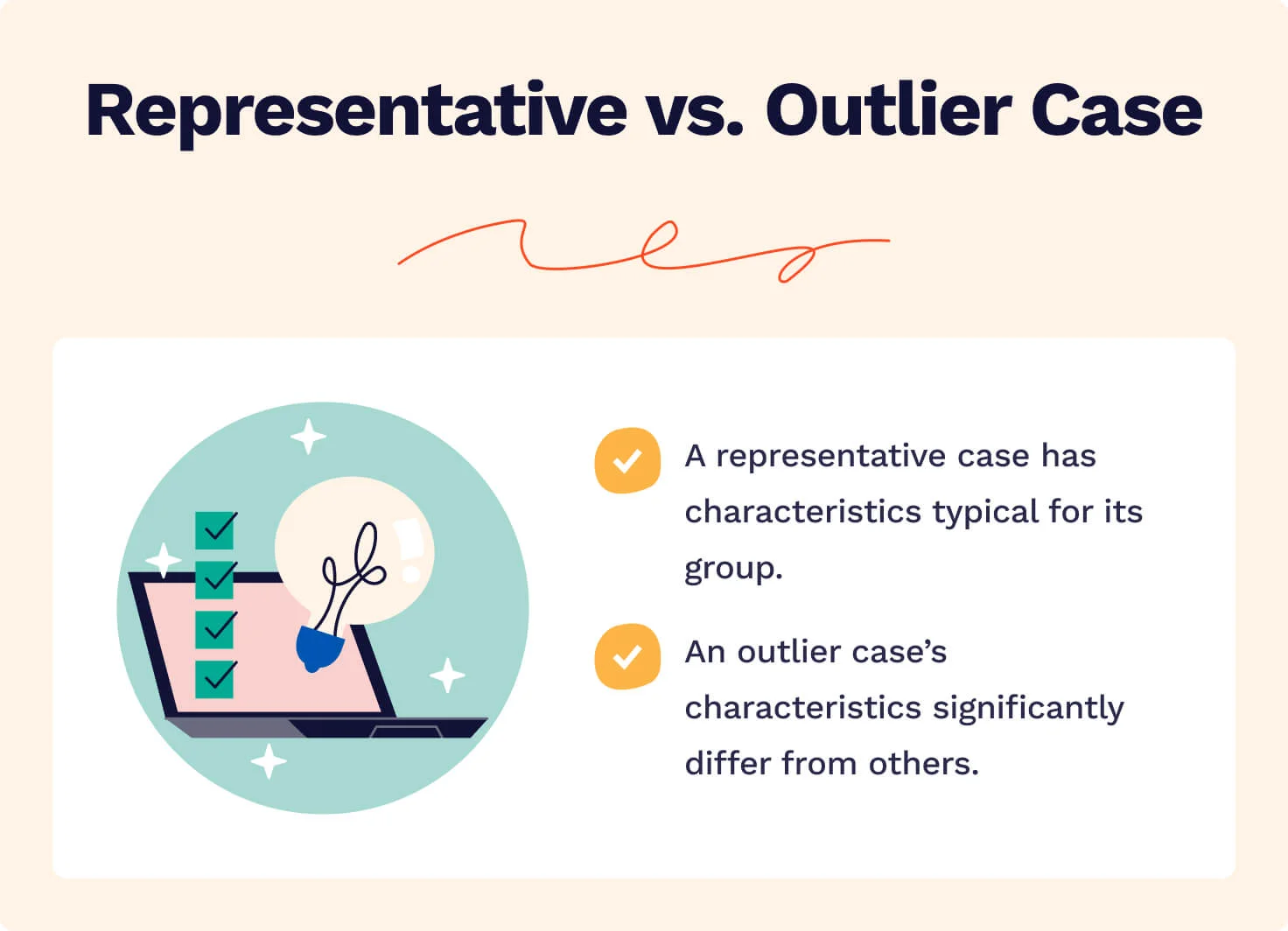🎉 Benefits of Our Case Study Analysis Generator
Our generator is one of the best, and there are many reasons for us to say so:
🤖 How to Use Our Case Study Answer Generator
Getting a case study analysis has never been simpler—see for yourself!
- Paste your case study into the field.
- Add questions or issues you need to resolve in your analysis.
- Press “Analyze now.”
- Receive the results!
Keep in mind that the answers given by the tool are to be used for reference purposes only.
✨ Case Study Analysis Definition
A case study analysis aims to examine a problem and find a solution. It is traditionally used in business and other spheres, like education, healthcare, and social sciences. The main feature of such research is that it’s rooted in a real-world context.

Researchers use direct observations, interviews, tests, and samples to gather data for their case studies. This information is then applied to develop solutions and recommendations backed with evidence.
🔎 Structure of a Case Study Analysis
Usually, a case study analysis comprises 6 parts. Each one is dedicated to a certain aspect and serves its respective aim. Let’s go through them and see how they differ.
Introduction
An introduction defines the context of the examined topic and provides substantial background on the case study’s subject. When you write it, keep in mind the following questions:
- What is your case study about?
- What is the primary reason for your research?
- Why is it essential to conduct it?
Problem Statement
The next part introduces the central problem the study will be concentrating on. Typically, it’s concerned with a challenge faced by a person or organization in question. The problem statement provides a clear focus for the whole research.
Analysis
Now, it’s time for the most gripping part—the analysis itself. When it comes to business problems, students can employ various approaches:
- SWOT analysis evaluates the firm’s strengths, weaknesses, opportunities, and threats.
- Descriptive statistics recaps the main characteristics of the collected data using various measures.
- Identification of causes approach looks for the underlying reasons behind the issue.
- Stakeholder researches the perspectives of different stakeholders involved in the case.

Solutions
This part proposes several ways to settle the issue in question. The solutions must be pragmatic and achievable. It’s also worth to mention their pros and cons and thus identify the most potent ones.
Recommendations
This part revolves around the best potential solution to the problem determined in the previous section. It explains how to execute it practically and how it will help eliminate the issue. It may also propose ways to deal with other minor dilemmas involved in the case.
Conclusions
Now, it’s time for the final section of the analysis: your conclusions. Here is what to do:
- Restate the results of your case study analysis and elucidate how they relate to the research’s main problem.
- Be sure to underline how vital your study is and how it helps make the issue more controllable.
- Make further proposals based on your findings.
✍️ How to Write a Case Study
Now you know what to include in your case study. But how do you write one that is truly outstanding? Just follow our step-by-step guide:
1. Pick a Case to Explore
Choosing the right topic is essential. You need to do it early on to ensure that the research subject is sufficiently explored.

For example, suppose you want to examine how COVID-19 has affected the hospitality sector. In that case, you can choose either a representative case, such as a large hotel chain, or an outlier case, such as a small Bed and Breakfast that has managed to survive the pandemic. The latter case may sound more interesting, but if there’s not enough information available on it, it’s best to choose the former.
2. Formulate a Problem Statement
Now, you should clearly and concisely formulate the central problem you will be focusing on. To do it, answer the 5 Ws:
- What is the problem you’re researching?
- Who is affected by it?
- Where does it occur?
- When did the problem arise?
- Why is this issue significant?
If you need help with this part of your analysis, you can always use our research problem generator.
3. Gather Evidence & Collect Data
Data gathering can be done through both primary and secondary sources of information. You can use a range of research techniques, such as observations, surveys, and interviews. It is crucial to make sure the data you’ve collected is pertinent to the case study.
4. Describe Your Findings & Analyze Them
Next, you analyze trends and themes in your data. This analysis must be supported by facts and evidence. Use various analysis methods to make your study more in-depth.
5. Provide Solutions & Recommendations
Develop several possible solutions using the information you’ve gathered. Once you’ve done it, answer the following questions:
- What are the pros and cons of these solutions?
- Which one can be the most beneficial?
- How can the entity you’re analyzing implement it in practice?
The more detailed your recommendations are, the better. If possible, try to include aspects such as timeline, resource allocation, and KPIs for monitoring.
🔝 Top 12 Case Study Topics & Examples
Want inspiration for your analysis? Or maybe you need help picking a case to explore? Check out this list of topics with examples!
- Operations and Information Management: A Case Study of CC Music
- Netflix and Blockbuster: Case Study
- Strategic Planning Case Study: Process Management
- HRM Incident: Case Study Analysis
- Case Study Summary: Hiring a Sustainable Development Specialist
- Organizational Change: Qatargas Case Study
- Childhood Development Case Study
- Case Study of Engstrom Auto Mirror Plant and Workplace
- Strategic Marketing: Amazon Go Case Study
- Cognitive Behavioral Therapy: Case Study
- Social Determinants of Health: Case Study
- Recovering Supply Chain Operations: A Case Study of Nissan
Now you know how to complete a case study! Remember that the tiring process of analyzing can be effectively streamlined if you use our free case study answer generator. Try it out—you won’t regret it!
We also recommend using our transition words maker and personal statement generator to enhance your writing.
Updated:
🔗 References
- Case Study: Definition, Examples, Types, and How to Write: Verywell Mind
- What Is a Case Study?: Evidence Based Nursing
- What the Case Study Method Really Teaches: Harvard Business Review
- Using Case Studies to Teach: Boston University
- What Is a Case Study? Definition, Elements and 15 Examples: Indeed
- Writing a Case Study: University of Southern California
- Writing a Case Study – Student Academic Success: Monash University